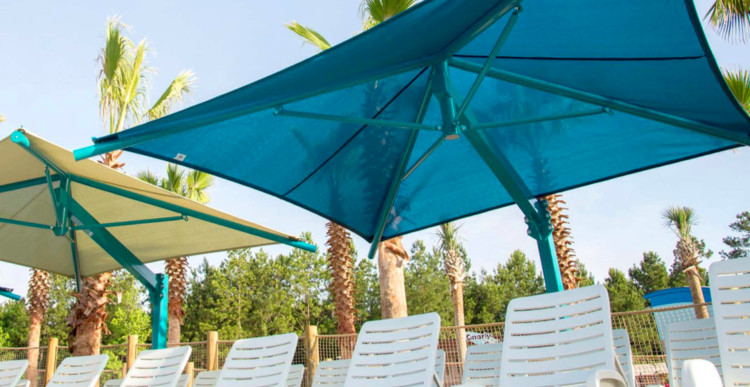Solar shade structures have emerged as a multifunctional solution that combines the benefits of providing shade and protection with the generation of clean and renewable energy. This article will delve into the world of solar shade structure design and construction, exploring the diverse options available, ranging from materials and shapes to installation techniques. By understanding the intricacies of solar shade structure design, we can maximize energy production while creating aesthetically pleasing and functional structures that contribute to a sustainable future.
- Materials For Solar Shade Structures
Solar car park structure can be constructed using a variety of materials, each with its own unique characteristics and benefits. Common materials used include steel, aluminum, wood, and fabric membranes. Steel and aluminum offer strength and durability, making them ideal for larger structures, while wood provides a more natural and aesthetic appeal. Fabric membranes, on the other hand, offer flexibility and translucency, allowing diffused sunlight to filter through while providing shade.
- Shapes And Architectural Considerations
Solar shade structures come in various shapes and sizes, allowing for customization to suit different locations and purposes. Some popular designs include cantilever structures, multiple-column structures, and sail-like structures. Cantilever structures provide unobstructed space underneath, making them suitable for car parks, while multiple-column structures offer a modular approach for flexibility and scalability. Sail-like structures are often used in outdoor recreational areas, providing an artistic and visually appealing design.
Architectural considerations, such as the orientation of the structure, play a crucial role in maximizing solar energy generation. Aligning the structure to face the sun’s path optimizes energy production, while the inclusion of solar tracking systems further enhances efficiency by following the sun’s movement throughout the day.
- Installation Methods And Foundation Systems
Solar car park shade structures can be installed using various methods, depending on the site conditions and design requirements. Some common installation methods include ground-mounted systems, rooftop installations, and integrated systems. Ground-mounted systems are typically used in open spaces and require foundations such as concrete footings or ground screws. Rooftop installations utilize existing structures, such as buildings or carports, making efficient use of space. Integrated systems combine the solar panels with the structure itself, seamlessly blending renewable energy generation with functional shade provision.
Foundation systems also play a crucial role in the stability and longevity of solar shade structures. Options such as ballasted systems, pile foundations, and concrete footings provide stability in different soil conditions. Engineering expertise is essential in determining the appropriate foundation system based on factors such as wind loads, soil conditions, and local building codes.
- Aesthetics And Integration
Aesthetics and integration are important considerations in solar shade structure design, as they ensure the structures blend harmoniously with the surrounding environment. Incorporating design elements such as curved or geometric shapes, color customization, and artistic patterns allows for creative expression while maintaining functionality.
Integration with other technologies and systems can further enhance the capabilities of solar shade structures. For instance, integrating energy storage systems enables the storage of excess energy for use during non-sunny periods, while smart monitoring and control systems provide real-time data on energy production and consumption, optimizing performance and maintenance.
Conclusion
Designing and constructing solar shade structures requires careful consideration of various factors, including materials, shapes, installation methods, and aesthetics. By leveraging innovative design options and construction techniques, solar shade structures can provide shade and protection while generating clean and renewable energy. As the demand for sustainable energy solutions continues to grow, solar shade structures offer a practical and visually appealing approach to meeting both environmental and functional needs.



